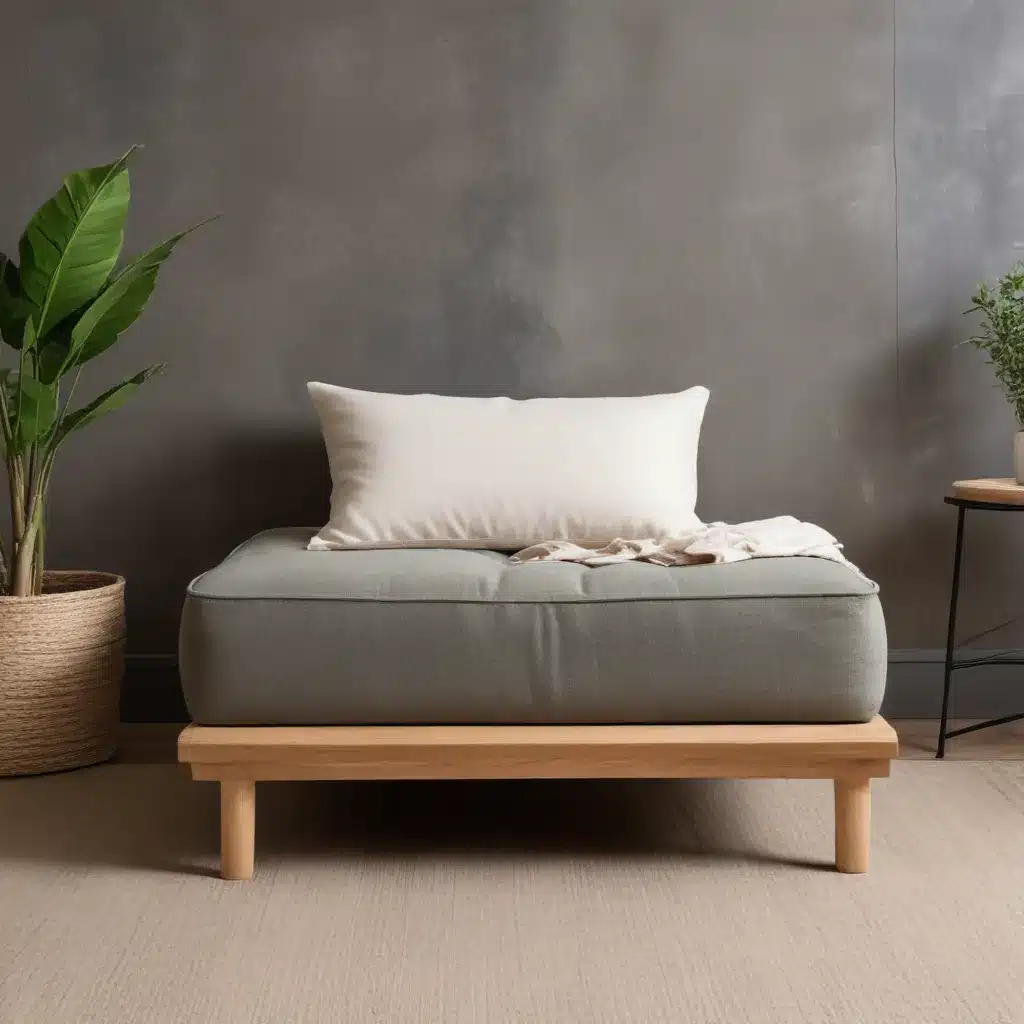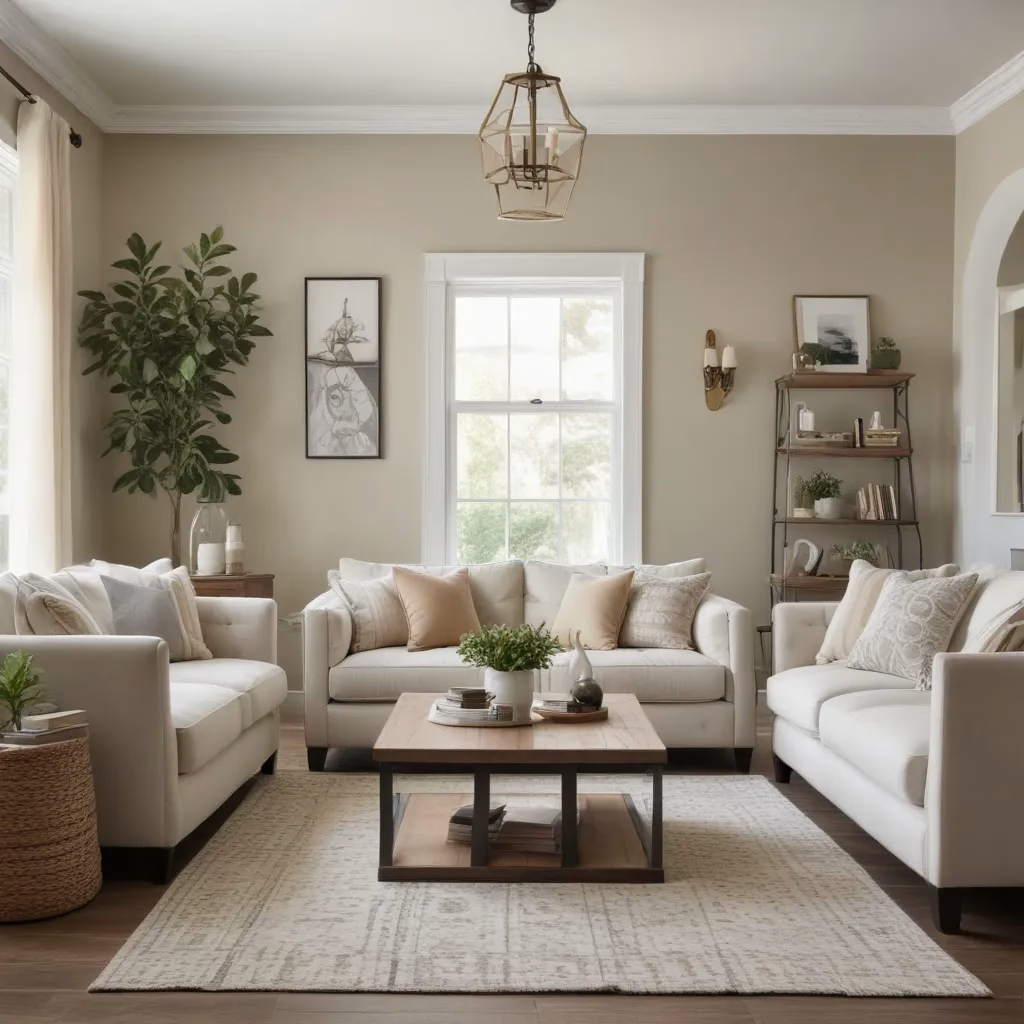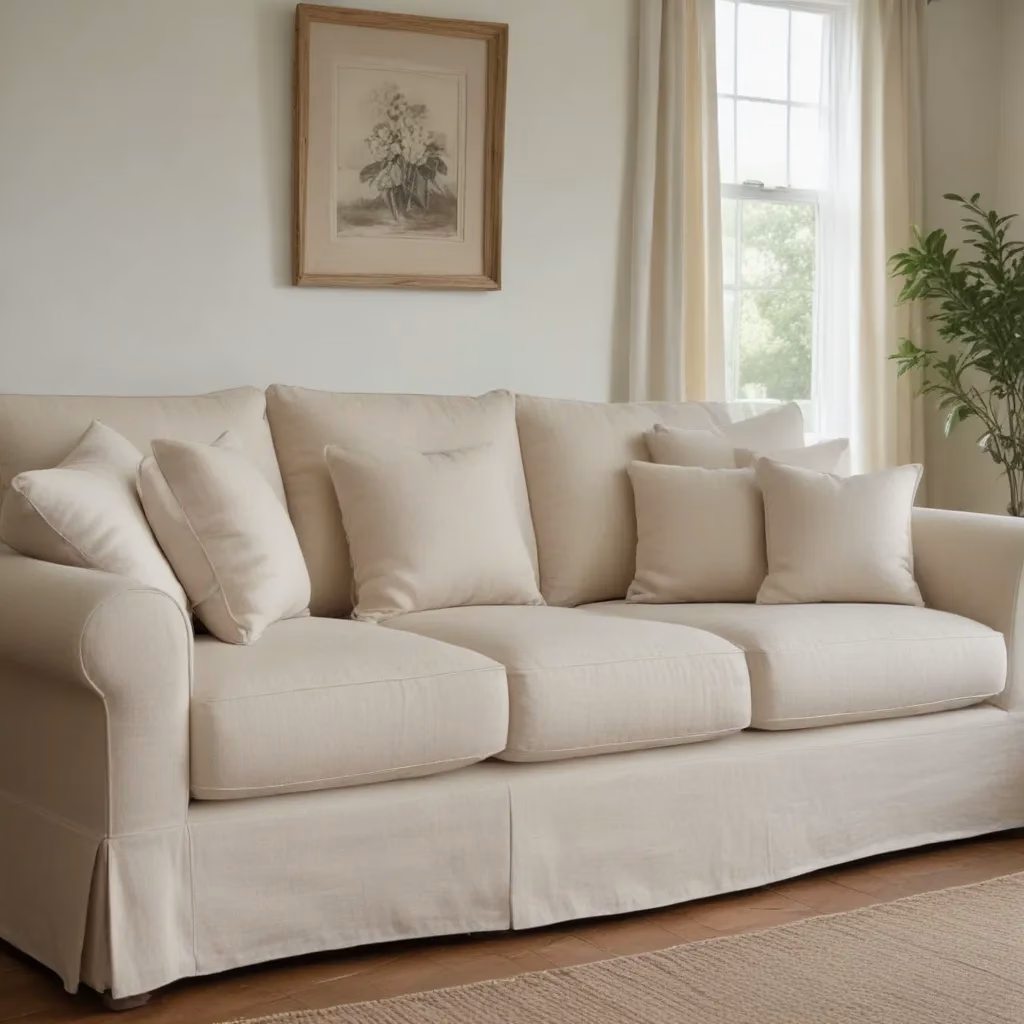
The Rise of Green Upholstery
As a furniture specialist with years of experience in the industry, I’ve witnessed a significant shift towards sustainability in home furnishings. Eco-friendly fabrics are no longer a niche market; they’ve become a mainstream choice for homeowners who want to create a stylish yet environmentally responsible living space.
When I first started in this field, options for green upholstery were limited. Today, I’m thrilled to see an abundance of choices that don’t compromise on quality or aesthetics. From recycled polyester to organic cotton, the range of eco-friendly fabrics has expanded dramatically. These materials not only reduce our environmental footprint but also bring unique textures and colors to our living rooms.
One of the most rewarding aspects of my job is helping clients understand the impact of their furniture choices. By opting for sustainable fabrics, we’re not just decorating homes; we’re contributing to a larger movement of conscious consumerism. It’s a small step that, when taken collectively, can lead to significant positive change for our planet.
Understanding Eco-Friendly Fabric Options
Natural Fibers: The Classic Choice
Natural fibers have always been a go-to for environmentally conscious consumers. In my experience, organic cotton stands out as a versatile and popular option. It’s soft, durable, and free from harmful pesticides and chemicals. I often recommend it to clients with young children or pets due to its hypoallergenic properties.
Another favorite of mine is hemp fabric. It’s incredibly strong and grows quickly with minimal water and no pesticides. I’ve seen hemp upholstery last for years, even in high-traffic areas of the home. Its natural resistance to mold and mildew makes it an excellent choice for humid climates.
Wool is another natural fiber that I frequently suggest for eco-friendly upholstery. Its natural fire-resistant properties often eliminate the need for chemical treatments. Plus, it’s biodegradable and renewable. I’ve had clients rave about how their wool upholstered sofas maintain their shape and resist staining better than synthetic alternatives.
Recycled Synthetics: Innovation in Sustainability
The advancement in recycled synthetic fabrics has been truly impressive. Polyester made from recycled plastic bottles is now widely available and performs just as well as virgin polyester. I’ve worked with numerous suppliers who offer these fabrics, and the quality is indistinguishable from traditional synthetics.
One success story that comes to mind is a client who was adamant about using only recycled materials in her home. We found a beautiful fabric made from reclaimed fishing nets for her sectional sofa. Not only did it look stunning, but it also had a fascinating story behind it that became a great conversation starter for guests.
Recycled nylon is another innovative option that I’ve seen gain traction. It’s incredibly durable and perfect for high-wear areas. I once used it for a family with three dogs, and the sofa still looks great years later, despite the daily abuse from enthusiastic pets.
Blended Eco-Fabrics: The Best of Both Worlds
In my professional opinion, some of the most exciting developments in eco-friendly upholstery come from blended fabrics. These combinations of natural and recycled synthetic fibers often offer the perfect balance of durability, comfort, and sustainability.
I recently worked on a project where we used a blend of organic cotton and recycled polyester for a set of armchairs. The fabric had the soft feel of cotton with the added strength and stain resistance of polyester. The client was thrilled with the result, especially knowing that their choice supported both organic farming and plastic waste reduction.
Another blend that I’ve had great success with is Tencel (lyocell) mixed with recycled polyester. Tencel is made from wood pulp in a closed-loop process, making it incredibly eco-friendly. When combined with recycled polyester, it creates a fabric that’s soft, strong, and moisture-wicking – perfect for family sofas that see a lot of use.
The Impact of Eco-Friendly Fabrics on Home Design
Aesthetics and Versatility
One common misconception I encounter is that eco-friendly fabrics are limited in color and pattern options. Nothing could be further from the truth! The range of designs available in sustainable upholstery is vast and ever-expanding. I’ve helped clients find everything from bold geometric prints to subtle textures, all in eco-friendly materials.
In fact, some of the most unique and beautiful fabrics I’ve worked with have been sustainable options. There’s a richness to natural dyes and an inherent texture to some eco-fabrics that simply can’t be replicated with conventional materials. I once used a hand-loomed organic cotton fabric for a set of throw pillows, and the depth of color and tactile quality were unmatched.
The versatility of these fabrics also means they can suit any design style. Whether you’re going for a minimalist Scandinavian look or a cozy farmhouse vibe, there’s an eco-friendly fabric that will fit the bill. I’ve successfully incorporated sustainable upholstery into modern lofts, traditional country homes, and everything in between.
Durability and Longevity
A question I often get from clients is whether eco-friendly fabrics are as durable as conventional options. In my experience, they often surpass traditional fabrics in terms of longevity. Many sustainable materials are naturally resistant to wear and tear, which means furniture stays looking good for longer.
I recall a client who was hesitant about using hemp fabric for their family room sofa. They were worried it wouldn’t stand up to their active lifestyle. Two years later, they called me to say it was the best decision they’d made – the sofa looked as good as new despite daily use by kids and pets.
This durability factor is not just good for your wallet; it’s great for the environment too. Furniture that lasts longer means less waste in landfills and less demand for new production. It’s a win-win situation that I always emphasize to my clients.
Health Benefits
Another aspect of eco-friendly fabrics that I’m passionate about is their health benefits. Many conventional upholstery fabrics are treated with chemicals for stain and fire resistance. While effective, these treatments can off-gas volatile organic compounds (VOCs) into your home.
Eco-friendly fabrics, on the other hand, often rely on natural properties or safer treatments. I’ve worked with numerous clients who have chemical sensitivities or young children, and switching to organic or eco-friendly upholstery has made a noticeable difference in their home environment.
One particularly memorable project involved a client with severe allergies. We reupholstered their entire living room set with organic wool fabric. Not only did it look beautiful, but the client reported a significant improvement in their allergy symptoms. It’s moments like these that remind me why I love working with sustainable materials.
Choosing the Right Eco-Friendly Fabric for Your Home
Assessing Your Needs
When helping clients select eco-friendly upholstery, I always start by assessing their specific needs. Do they have young children or pets? Is the piece for a high-traffic area or a seldom-used formal living room? Understanding these factors is crucial in recommending the right fabric.
For high-wear areas, I often suggest tightly woven fabrics made from durable fibers like hemp or recycled polyester. These can stand up to frequent use without showing signs of wear. For formal spaces, luxurious options like organic silk or wool blends can add a touch of elegance while still being environmentally friendly.
It’s also important to consider cleaning and maintenance. Some eco-fabrics are easier to clean than others. For busy households, I might recommend a stain-resistant recycled polyester blend. For those who prefer natural fibers, a wool-cotton blend can offer good stain resistance and easy cleaning.
Color and Pattern Considerations
Choosing the right color and pattern is just as important with eco-friendly fabrics as it is with conventional ones. I always advise clients to consider the overall color scheme of their room and how the new upholstery will fit in.
One advantage of many eco-friendly fabrics is their ability to take on rich, vibrant colors through natural dying processes. I’ve used stunning indigo-dyed organic cotton that adds depth and character to a room in a way that synthetic dyes simply can’t match.
For patterns, the sky’s the limit. From subtle herringbone weaves to bold floral prints, eco-friendly fabrics come in a wide array of designs. I often encourage clients to consider timeless patterns that won’t quickly go out of style, ensuring their furniture remains relevant for years to come.
Testing and Sampling
Before committing to a fabric, I always recommend testing samples in your home. The way a fabric looks in a showroom can be quite different from how it appears in your living room. Many eco-friendly fabric suppliers offer sample swatches, which are invaluable in the decision-making process.
I advise clients to live with the samples for a few days. Look at them in different lights – natural daylight, evening lamp light, and even under the glare of a TV screen. Feel the texture and consider how comfortable it would be to sit on for extended periods.
One client was torn between two similar shades of green for their sofa. By bringing samples home, they realized that one looked much better with their existing curtains and artwork. This kind of real-world testing can make all the difference in achieving a cohesive look.
Maintaining Your Eco-Friendly Upholstery
Regular Care and Cleaning
Proper maintenance is key to ensuring your eco-friendly upholstery stands the test of time. In my experience, many sustainable fabrics are actually easier to care for than their conventional counterparts.
For daily maintenance, I recommend regular vacuuming to remove dust and debris. Most eco-friendly fabrics respond well to gentle brushing, which can help maintain their texture and appearance. For spills, quick action is crucial. Blotting (not rubbing) with a clean, damp cloth is usually sufficient for most eco-fabrics.
I always provide my clients with specific care instructions for their chosen fabric. Some natural fibers, like wool, have excellent stain-resistant properties and often only require spot cleaning. Others, like organic cotton, might benefit from occasional steam cleaning to refresh the fibers.
Dealing with Stains
Even with the best care, stains can happen. The good news is that many eco-friendly fabrics are surprisingly resistant to staining. However, when stains do occur, it’s important to treat them properly to avoid damaging the fabric.
For water-based stains on most eco-fabrics, I recommend a simple solution of mild soap and water. Gently blot the stain, working from the outside in to prevent spreading. For oil-based stains, a mixture of white vinegar and water can be effective on many natural fibers.
I once had a client panic over a red wine spill on their new hemp sofa. We tackled it immediately with a baking soda paste, followed by gentle cleaning with soap and water. The stain came out completely, and the client was amazed at how resilient the fabric proved to be.
Professional Cleaning
While many eco-friendly fabrics can be maintained at home, professional cleaning can help extend their life and keep them looking their best. I usually recommend professional cleaning every 12-18 months, depending on use.
When selecting a professional cleaner, look for one with experience in eco-friendly fabrics. Some conventional cleaning methods can be too harsh for natural fibers. I’ve had great success with cleaners who use low-moisture extraction methods or plant-based cleaning solutions.
One of my clients has a beautiful organic wool sectional that sees heavy use from their large family. We’ve established a routine of professional cleaning every spring, and it’s remarkable how fresh and new the sofa looks after each cleaning. This regular maintenance has kept the piece looking great for years, far outlasting their previous conventional sofa.
The Future of Eco-Friendly Upholstery
Emerging Technologies
The field of sustainable fabrics is constantly evolving, and I’m excited about the innovations on the horizon. One area that’s particularly promising is the development of bio-based synthetic fabrics. These materials are made from renewable resources like corn or sugar cane but offer the performance benefits of traditional synthetics.
I’ve been following the progress of fabrics made from agricultural waste products, such as pineapple leaves or banana stems. These materials not only repurpose waste but also create unique textures and appearances. While still in the early stages, I believe these innovations will soon become more widely available for home furnishings.
Another exciting development is in the realm of smart textiles. Researchers are working on eco-friendly fabrics that can change color or pattern with the application of heat or light. Imagine being able to update the look of your sofa without replacing the entire piece of furniture!
Growing Consumer Awareness
In my years in the furniture industry, I’ve seen a significant shift in consumer attitudes towards sustainability. More and more of my clients are specifically requesting eco-friendly options, not just for environmental reasons but also for health and durability considerations.
This growing awareness is driving manufacturers to expand their sustainable offerings. I’m seeing an increase in the variety of eco-friendly fabrics available, from luxurious high-end options to more affordable everyday choices. This trend is making it easier than ever for homeowners to make environmentally responsible decisions without sacrificing style or quality.
I believe we’re reaching a tipping point where sustainable fabrics will become the norm rather than the exception. As production scales up and technologies improve, I expect to see prices become even more competitive with conventional fabrics.
The Role of Certification and Standards
As the market for eco-friendly fabrics grows, so does the importance of reliable certifications and standards. These help consumers make informed choices and ensure that products truly meet sustainability criteria.
In my practice, I often look for certifications like Global Organic Textile Standard (GOTS) for organic fabrics or OEKO-TEX for tested safety from harmful substances. These certifications provide peace of mind for clients who want to ensure their choices align with their values.
I anticipate that we’ll see even more comprehensive standards developed in the coming years. These will likely address not just the environmental impact of the fabrics themselves, but also the entire supply chain, from raw material sourcing to manufacturing processes.
Conclusion: Embracing Eco-Friendly Fabrics in Your Home
As we’ve explored throughout this article, eco-friendly fabrics offer a wealth of benefits for conscious homeowners. From their reduced environmental impact to their durability and health advantages, these materials are an excellent choice for anyone looking to create a sustainable and stylish living space.
In my years of experience, I’ve seen firsthand how the right eco-friendly upholstery can transform a room, both aesthetically and in terms of comfort. Whether you’re redecorating your entire home or simply updating a single piece of furniture, considering sustainable fabric options is a choice you’re unlikely to regret.
Remember, every small decision we make in our homes can have a ripple effect on the wider world. By choosing eco-friendly fabrics, we’re not just creating beautiful interiors; we’re contributing to a more sustainable future for our planet.
If you’re ready to explore the world of sustainable seating and eco-friendly fabrics, I encourage you to visit Sofa Spectacular. Their range of options and expert guidance can help you find the perfect eco-friendly upholstery for your home, combining style, comfort, and sustainability in one beautiful package.



